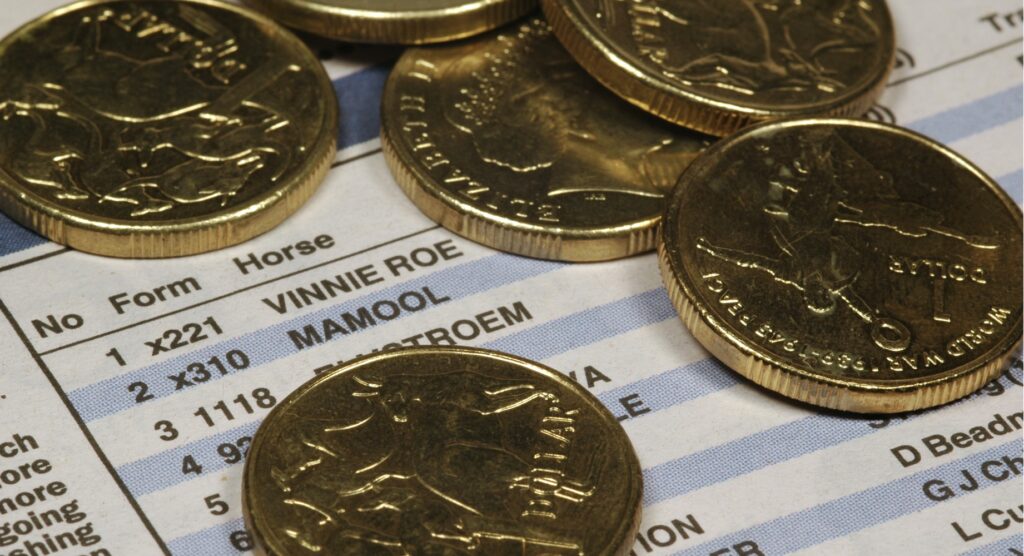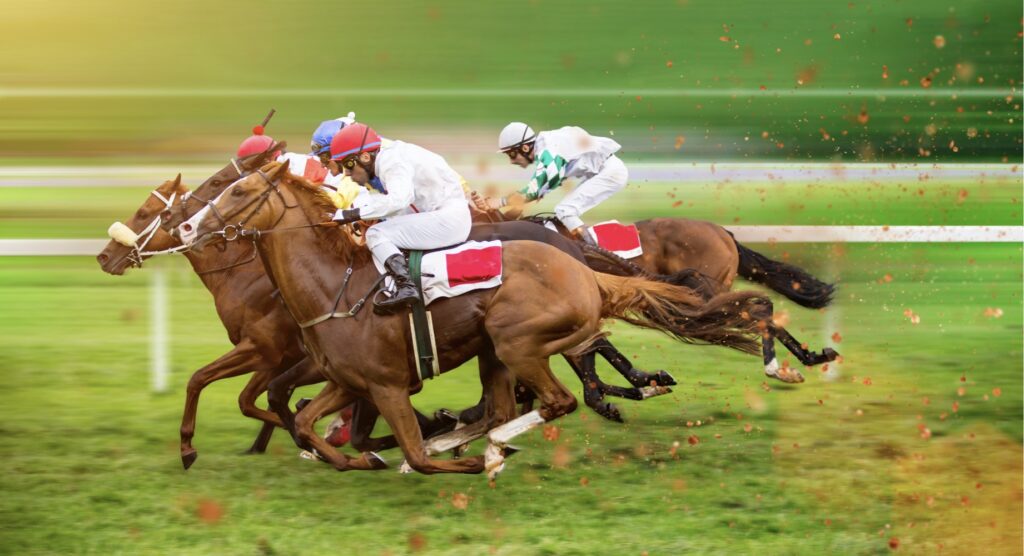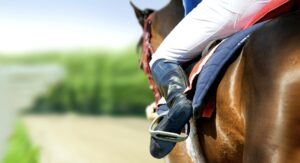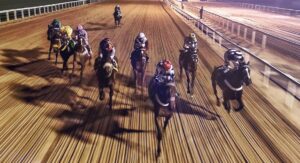Multiple Value in Horse Racing
Betting on more than one horse in race can be a difficult approach for many punters to get their head around, but it can actually be extremely fruitful in certain situations. This article takes a look at the theory behind why backing more than one runner can be profitable and then identifies the situations where multiple value may be present.
Theory
Obtaining betting value is the art of identifying a selection whose actual odds of winning (the price available) exceed the true odds of success. An in depth explanation of betting value can be found in The Hunt For Sports Betting Value and the same principles for ‘beating the book’ apply across any gambling discipline.
In many events there are just two participants, so the number of outcomes are limited to two or three. However, in horse racing there can often be a large number of different outcomes due to size of the fields and the sheer amount of runners competing in each event, and it can often pay to back multiple horses in the same race.
When researching a race, it is not uncommon to find more than one runner whose odds you believe are incorrect – be that the horse is overpriced or under-priced.
Multiple Value Example
Take a mythical race where there are six runners. All of the horses have an identical chance on paper and as such should be 6.00, which represents a 16.67% chance (100 divided by 6) of success. However, the market has decided that two of the runners have less of a chance than the rest and they are on offer at 10.00.
For the simplicity of the example we are making the book 100% and so the remaining four runners at prices up at odds of 5.00 (most well-known books go off around 101% and bookmakers tend to be 110%+).
| Runner | Decimal Odds | Implied Probability | Actual Probability | Value |
|---|---|---|---|---|
| Horse 1 | 5.00 | 20.00% | 16.67% | -3.33% |
| Horse 2 | 5.00 | 20.00% | 16.67% | -3.33% |
| Horse 3 | 5.00 | 20.00% | 16.67% | -3.33% |
| Horse 4 | 5.00 | 20.00% | 16.67% | -3.33% |
| Horse 5 | 10.00 | 10.00% | 16.67% | 6.67% |
| Horse 6 | 10.00 | 10.00% | 16.67% | 6.67% |
We can see that both Horse 5 and 6 offer 6.67% value due to the incorrectly priced market. By backing EITHER Horse 5 or Horse 6, we would be obtaining the 6.67% value, however by backing BOTH of the runners, the value received would be doubled to 13.33% (allowing for rounding)
Backing both of the runners, you are effectively receiving odds of 5.00 on a 3.00 chance (20% as opposed to 33.33%) and therefore when there is multiple value in the race, taking advantage of it can boost long term returns.
Compounding the value can really be beneficial. Assume that the race was run 1000 times, either Horse 5 or 6 would win 1/3rd (33.33%) of those races– 333.
However, each time that a horse won, it would be paid out at 10.00, giving a large profit over time. Assuming £1 had been staked on each selection over 1000 bets, with a total stake of £2000:
Winning bets = 333
Winning odds = 10.00
Total Return = £3330
Profit = Returns (£3330) – Stake (£2000) = £1330
ROI = 66.5%
*figures have been rounded
As the numbers show, the upside of backing both horses is massive. In reality, the value edge for both of the runners is quite big and the discrepancies in actual odds and true odds would be unlikely to be present so close to the off time (possibly available with early morning odds when bookmakers haven’t had much activity to shape the market), however the figures serve the purpose of illustrating the theory.
If choosing to back either Horse 5 or Horse 6, then over the long run the returns would actually be the same. Either horse would win 16.67% of the time and would be paid out at odds of 10.00, but there are benefits to backing both runners. Getting a combined 3.00 about a 5.00 chance is preferable to getting 6.00 about a 10.00 chance due to the lower variance in losing runs. Essentially, a 3.00 shot is going to win more often than a 6.00 chance.
What does this mean? Well a 3.00 shot gives more consistent returns and steady bank growth which is preferable – particularly if a % or ratchet method of staking is utilised.

Where Is Multiple Value Present?
Obviously multiple value is present wherever there are horses whose odds on offer exceed their true chance of success. However there are certain circumstances in which multiple value is likely to exist:
Large Field Spring Handicaps
Large Field Spring Handicaps
Big flat races such as The Stewards Cup or The Wokingham are often contested by 20+ horses. The horses often split up into two, or even three packs and the draw can have a huge impact on the outcome of the race, with one side of the field often several lengths clear of their rivals.
Multiple value can exist in these field when one or more runner has a very good chance of winning its own ‘side’ of the race. By backing all the value runners, any draw bias is being covered and an advantage is gained on both sides of the field.
Front Runner and Hold Up Horses
Front Runner and Hold Up Horses
The question marks over pace in a race can create multiple value. There may be one horse who loves to lead and will have an excellent chance if getting an uncontested pace. In the same race there may be a hold up runner who will go very close if getting a good pace to aim at.
If nothing takes on the front runner, then its odds will be massive value. On the other hand if another runner goes forward and decides to take on the front runner and causes a pace duel, this will significantly enhance the chance of the hold-up horse.
There is accumulative value to be had by backing both runners.
Unknown on the Ground
Unknown on the Ground
Ground extremes can create multiple value, with certain horses unproven under conditions. A hurdlers may have racked up several wins on good to firm ground in the summer but then encounters soft ground after a break in the winter.
If the horse handles the change in the going, then his form is better than the rest of the field and victory looks likely. However, it is a big if.
There is also one horse in the race who loves soft ground but whose form is not as strong. If the other runner does not handle the conditions, then this one is likely to take advantage.

Final Thoughts
Never be afraid to back more than one horse in a race. If value exists, then it would be remiss not to capitalise on it, regardless of how many runners are attractively priced. In the long run this will produce consistent profits.




